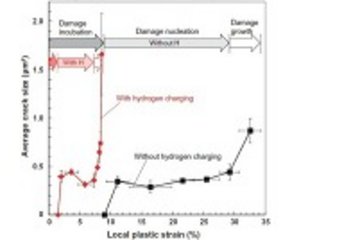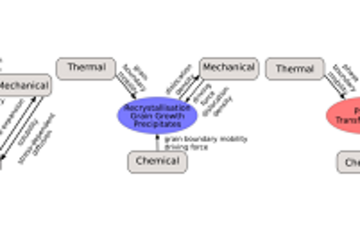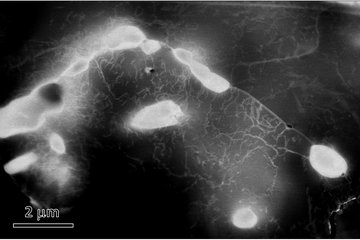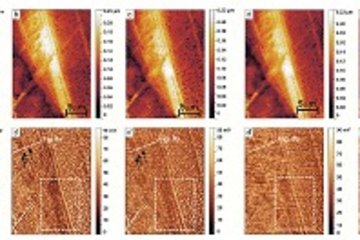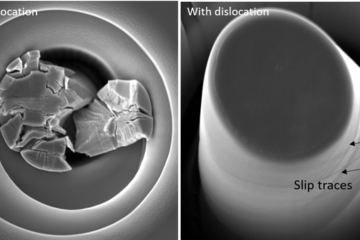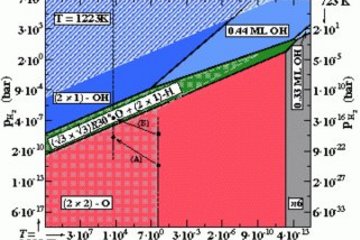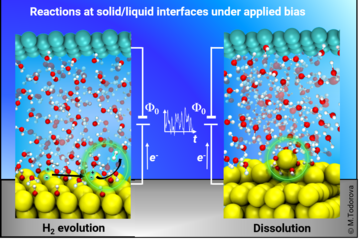All genres
181.
Talk
Multiphysics simulations in DAMASK. Euromat 2021, Virtual (2021)
182.
Talk
Coupling Cellular Automata & Crystal Plasticity frameworks for full-field simulation of Dynamic Recrystallization. Euromat 2021, Virtual (2021)
183.
Talk
An optimized method for the simulation-based determination of initial parameters of advanced yield surfaces for sheet metal forming applications. Complas 2021, online (2021)
184.
Talk
Influence of crystal neighbor orientation on in-grain texture fragmentation of cube grains in Aluminium. Euromat Conference 2021, Virtual (2021)
185.
Talk
DAMASK: the Düsseldorf Advanced MAterial Simulation Kit for studying multi-field crystal plasticity phenomena. Seminar, Yanshan University, online, Qinhuangdao, Hebei, China (2020)
186.
Talk
Adaptive gridding/meshing for solving high-resolution large-deformation 3D crystal plasticity simulations. M2i Conference and Meeting Materials 2020 virtually, Noordwijkerhout, The Netherlands (2020)
187.
Talk
Multi-scale and multi-physics simulations of chemo-mechanical crystal plasticity problems for complex engineering materials using DAMASK. Online Colloquium Lecture, Department of Materials Science and Engineering, KTH Royal Institute of Technology, Stockholm, Sweden (2020)
188.
Talk
(Re-) formulation of dislocation density based crystal plasticity models in view of insights from parameter determination. Oberwolfach Workshop: Mechanics of Materials: Towards Predictive Methods for Kinetics in Plasticity, Fracture, and Damage, Oberwolfach, Germany (2020)
189.
Talk
Coupling Crystal Plasticity and Phase Field Methods - The Future of Integrated Computational Materials Engineering? Seminar "Materials Technology, in particular of Magnesium Materials", Geesthacht, Germany (2020)
190.
Talk
A Coupled Crystal Plasticity – Cellular Automaton Method for 3D Modeling of Recrystallization: Part I: Crystal Plasticity. International Conference on Plasticity, Damage, and Fracture, Riviera May, Mexico (2020)
191.
Talk
Calibrating yield surface models based on full yield crystal plasticity simulations. M2i conference 'Meeting Materials', Noordwijkerhout, The Netherlands (2019)
192.
Talk
Understanding the Plastic Behavior of Tungsten From First Principles to Crystal Plasticity. International Mechanical Engineering Congress & Exposition (IMECE) 2019, Salt Lake City, UT, USA (2019)
193.
Talk
DAMASK: The Düsseldorf Advanced Materials Simulation Kit. Seminar of the Department of Materials Science and Engineering of the Ohio State University, Columbus, OH, USA (2019)
194.
Talk
Coupling Crystal Plasticity and Phase Field Methods - The Future of Integrated Computational Materials Engineering? Recent Advances in the Modeling and Simulation of the Mechanics of Nanoscale Materials, Philadelphia, PA, USA (2019)
195.
Talk
Determination and validation of BCC crystal plasticity parameters for a wide range of temperatures and strain rates. 7th Conference on Recrystallization and Grain Growth, REX 2019, Ghent, Belgium (2019)
196.
Talk
Prediction of Nucleation Sites for Recrystallization using Crystal Plasticity Simulations. 7th International Conference on Recrystallization and Grain Growth, Ghent, Belgium (2019)
197.
Talk
Coupled Experimental-Computational Investigations of Grain Scale Mechanics in Complex Metallic Microstructures. 15th U.S. National Congress on Computational Mechanics, Ausrin, TX, USA (2019)
198.
Talk
Beyond Crystal Plasticity – Developing Tools for Integrated Computational Materials Engineering. Seminar of the Tasan Group, MIT, Boston, MA, USA (2019)
199.
Talk
DAMASK - The Düsseldorf Advanced MAterial Simulation Kit for studying multi-physics crystal plasticity phenomena. TOOLKIT seminar Integrated Computational Materials Engineering, OCAS, Gent, Belgium (2019)
200.
Talk
Multi-scale modeling of plasticity. ICIAM 2019 - The 9th International Congress on Industrial and Applied Mathematics, Valencia, Spain (2019)




